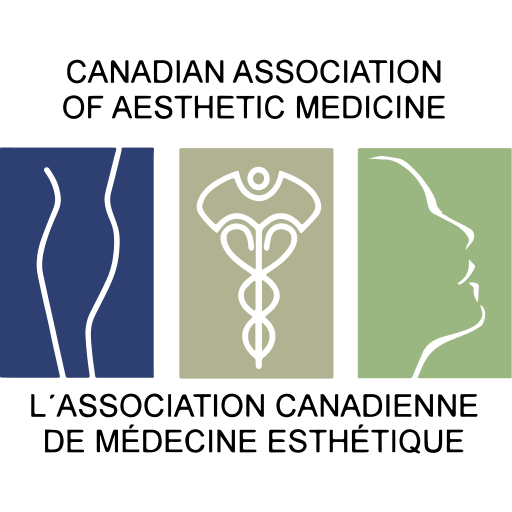
 Canadian Association of Aesthetic Medicine
Canadian Association of Aesthetic Medicine
With the passage of time, wrinkles and fine lines appear on the face. The signs of aging are most evident in the areas around the mouth, between the eyebrows and around the eyes and lead many men and women to see a doctor.
There are two mechanisms that cause wrinkles:
Before deciding on the appropriate treatment, it is important to determine the underlying cause of each wrinkle.
In treating wrinkles, the approach used depends on the underlying causes:
The treatment of choice for expressive wrinkles directly associated with muscle movement is an injectable neuromodulator. Neuromodulators indicated in Canada for the improvement of cosmesis are extracts of botulinum protein. Currently, these are Botox®, Dysport® and Xeomin®. Tiny amounts of this purified botulinum protein are injected into specific facial muscles responsible for the creation of facial lines and wrinkles, to relax the movement and allow for the skin to remodel and the lines to fade over time. With the proper placement and quantity of neuromodulator injection, anatomic structures such as eyebrows may even be delicately shaped to achieve improved resting cosmesis.
Medical doctors have used neuromodulators for various medical conditions for over twenty years. In addition to the cosmetic treatment of facial wrinkles of the forehead, beneath and next to the eyes, and around the mouth, neuromodulator injections can also be used to improve excessive sweating (hyperhidrosis) of the underarms, palms and soles, as well as prevent migraine headaches and reduce muscle spasticity such as cervical dystonia.
Since candidates for injectable neuromodulators are varied and have different goals and expectations, a professional assessment is essential prior to the initiation of any treatment, and should be performed by a qualified and trained physician. Injectible neuromodulator therapy is temporary and therefore requires repeated treatment sessions. On average, depending on various internal and external factors, effects can last for about 3 to 5 months. Cosmetic improvement after treatment is seen within 3 to 7 days. It takes about two weeks before the full result of a treatment session is realized, and may require additional treatment sessions before optimal results are seen. Repeat treatments will result in longer lasting cosmetic results.
Treatment with neuromodulators compliment other cosmetic modalities very well. Deeper wrinkles that persist despite the injection of Botox neuromodulators can then be improved with other treatments, such as soft tissue fillers or energy-based modalities such as laser, light, ultrasound and radiofrequency technology.
Neuromodulator injection therapy has become a mainstay of cosmetic medicine, and if performed properly, can greatly enhance the appearance of the aging face.